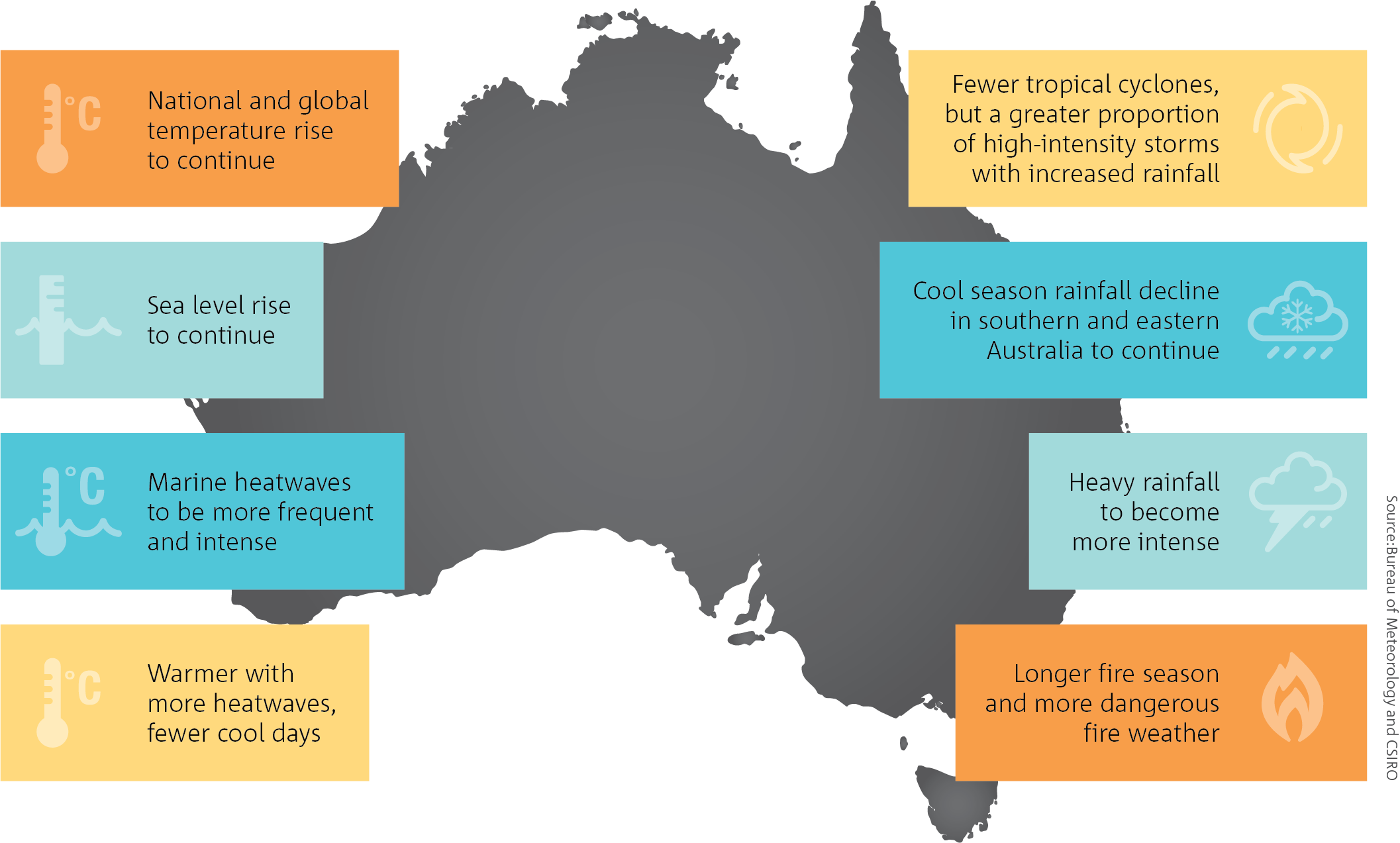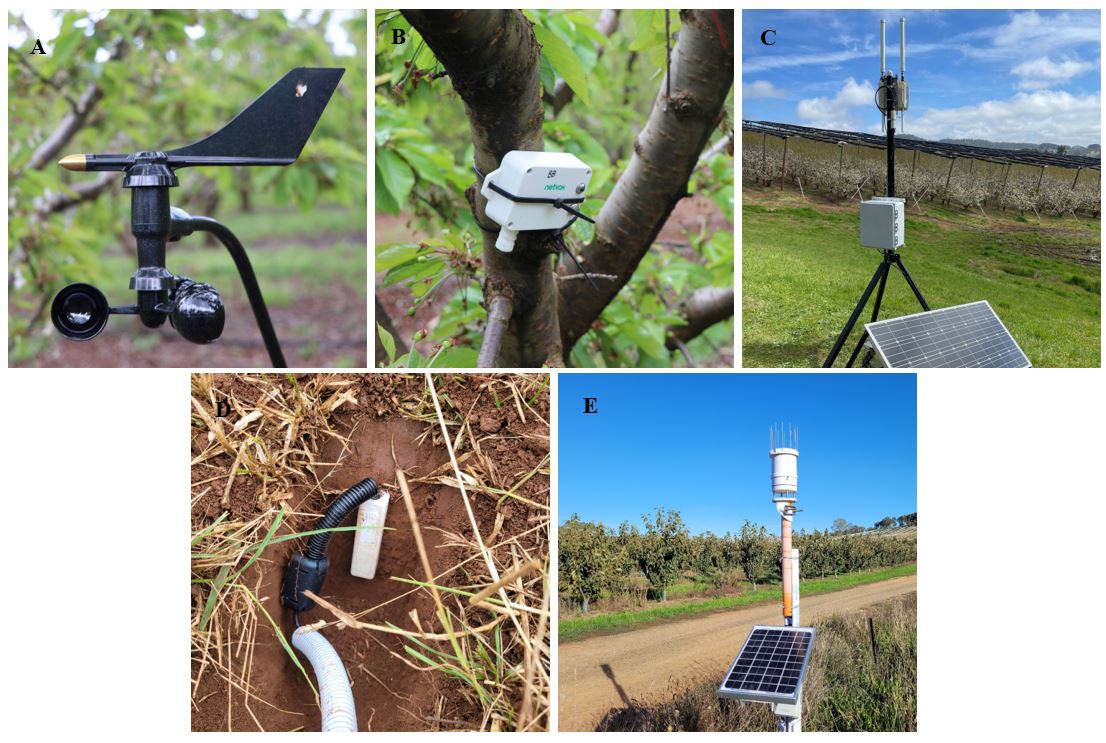As the climate becomes more unpredictable and extreme weather events become more common, protective rain covers appear to be a strong option for growers to protect their crop against these climatic factors. Researchers from NSW DPIRD are working with growers to test new technologies to make their orchards more resilient to a changing climate. Sensors were deployed in the orchard capturing real-time weather conditions under covers and in control blocks (see Table 2).
| Sensor | Use | Type Used |
|---|---|---|
| Anemometer | Measure wind speed and wind direction | Davis Ventage Pro |
Temperature and humidity sensor | Measure changes in temperature and humidity | Netvox R718A |
| Soil moisture probe | Measure changed soil moisture and soil temperature at one depth | Meter Teros-12 |
| Weather station | Measures 12 weather variables including: air temperature, relative humidity, vapour pressure, barometric pressure, wind speed and direction, solar radiation, precipitation, lightning | Meter Atmos-41 |
| Central communicator | Connects sensors to a common panel and sends data to be received by the grower to read | LoRaWan Gateway (MultiTech Conduit IP67) |
Being able to make an informed decision, based on data and local research will increase the adoption of protective covers in the NSW cherry industry. Further work into the economic viability to combine with the results of our trial will make this more effective. We hope to continue this trial, with the addition of new locations and types of net to create more datasets for industry to use to make more decisions.
If you would like to be involved in this trial, or you are interested in learning more, please contact Jessica Fearnley, Development Officer Temperate Fruits on 0437 284 010 or jessica.fearnley@dpi.nsw.gov.au
References
Orange Region Vignerons Association (ORVA). (2010). Orange region terrior: A review of the unique features of the Orange wine region NSW - Australia. Retrieved from https://www.orange360.com.au/Wineries/Terrior
AdaptNSW - https://www.climatechange.environment.nsw.gov.au/home



